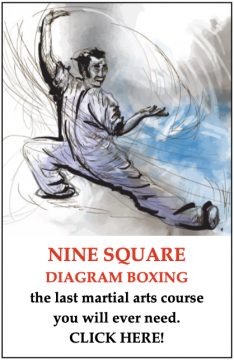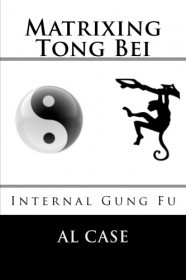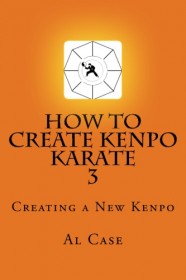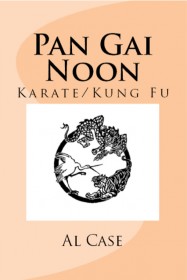Combat Aikido: Three Ways to Make It Happen!
In Combat Aikido is not always good for self defense. It shouldn’t be so, because that great art was born of Samurai on the battlefield. Its roots are a thousand years ago in the bloody battles of warlords for control of Japan.
After the wars were over, the surviving warlords, two brothers, called the surviving samurai together and asked them what techniques they used to conquer the enemy. The resulting list of techniques was over 3200 long. These techniques were taught as Daito Ryu Aiki Jujitsu, and it is this art which influenced the founder of Aikido, Morihei Ushiba when he created his masterpiece.
So why doesn’t the art work for self defense? Because it is taught as a religion, and religion tends to strip the violence out of the art. I mean, taking perfectly good ways to maim and destroy muggers just because one believes in world peace and harmony and all that sort of stuff…huh!
The first thing this religious influence did was soften the attacks. The attacks offered in an Aikido class are slow and flowing and easy for the defender to handle. This may teach one the technique, but it doesn’t approximate the hard, fast reality of a punch in the face that is encountered on the street.
The second flaw in the circular art is that the strikes (Atemi) have been watered down. They are shown, but not drilled. This means that the student doesn’t really learn what it’s like to strike a human body,
Finally, some of the techniques are designed to teach one how to handle flow in long and unreal manners. You do have to learn flow, that is a given. But there are easier and quicker ways to learn flow, and these ways include techniques that are much more street ready.
Now, this article was not written to offend anybody, but to offer a question, and to offer that question with an eye towards improvement. A student who can’t improve, but merely robots the ritual, is not a student at all. I really don’t think Morihei Ushiba was a robot, nor were the samurai who passed the art to him.
So, make the attacks more real, put back in some hard core Atemi strikes, and work the techniques so they teach flow, but in a manner more conducive to self protection. Tell the truth, the really good Aikidokas that I meet are usually doing just this, even if on their own. But, do these three things, stay true to the art, and you are going to find that you have a Combat Aikido that can lay waste to anything, even while promoting peace and harmony within and without.









i agree that aikido can be a very effective combat art if done in a non water down fashison. i’m not aikido artist but i have use a couple of techiques.
I’ve been doing Brazilian Jiu-jitsu for about a decade and I think I have a pretty good idea why Aikido doesn’t work. It’s because the attacks concentrate on the wrist without isolating the elbow. Aikido concentrates on using two hands on one wrist joint but someone can use his wrist, elbow, shoulder, and whole body to simply jerk out of the lock.
Two hands vs the guys whole body is always a losing situation. Think about it another way, how can you manipulate a persons body with their wrist when they have a joint in the elbow. Your only hope would be to lock the wrist in such a way as to also lock the elbow. Just not practical.
In jiu-jitsu wrist locks work well when you have the elbow already isolated against your body.
Of note, I have had an amazing amount of luck doing aikido when playing around with kids. They don’t yet have the strength to jerk out of the holds and it makes me look like a superhero.
hmmmmm, i prefer to give the cat some blows before grabing & throwing. bruce tegner’s book on aikido says it all. if yoshinkan deals with the prewar aikijutsu, it may work. but how can one stop those powerful muaythai kicks or tkd’s because double forearm block as in wing chin will end up leaving ur arms fragmented.
I completely agree Aikido is the art of peace it was designed to defend yourself from injury without causing your attacker injury, there are different variants of aikido: wama Ryu, Ki Society, Kobayashi aikido, Manseikan Aikido, Shodokan Aikido, Suenaka-ha Tetsugaku-ho Wadokai Aikido, Yoseikan Aikido, Yoshinkan Aikido.
As far too my knowledge none of these varients include the practitioner punching his enemy which is probably the reason for the punches being “watered down” the teacher was never taught to punch and so the punces the students receive and are trained against are not realistic.
I think they should get a boxing or karate student in to practice aikido on to show the students ow to defend against punches of full force to make the art more effective.
As with all martial arts, there is no good one and no bad one. As an Instructor in Aikido, Aiki Jujitsu, Ju Jitsu and Kyusho Jitsu, I can see the differences in the different martial arts. I agree that some Aikido styles won’t work in the street. I was brought up with Aikikai and I can assure you that the way we train, it will work in life situations (my own experience). In our Aikido class we practice kicks and punches. If you know how to kick or punch, you can learn to defend yourself against it.
O Sensei himself said that 70% of Aikido is Atemi. Unfortunately, there aren’t many clubs practicing atemi waza. We do.
I teach the Royal Navy, have been teaching security and police.
A good practitioner of Aikido can defend himself in the street. But that counts for all martial arts. Taekwondo has been watered down due to competition. These days it looks a bit slapping etc. Original Taekwondo exist for 30% of throws. Where have the throwns gone. And that counts for more martial arts.
Just my opinion